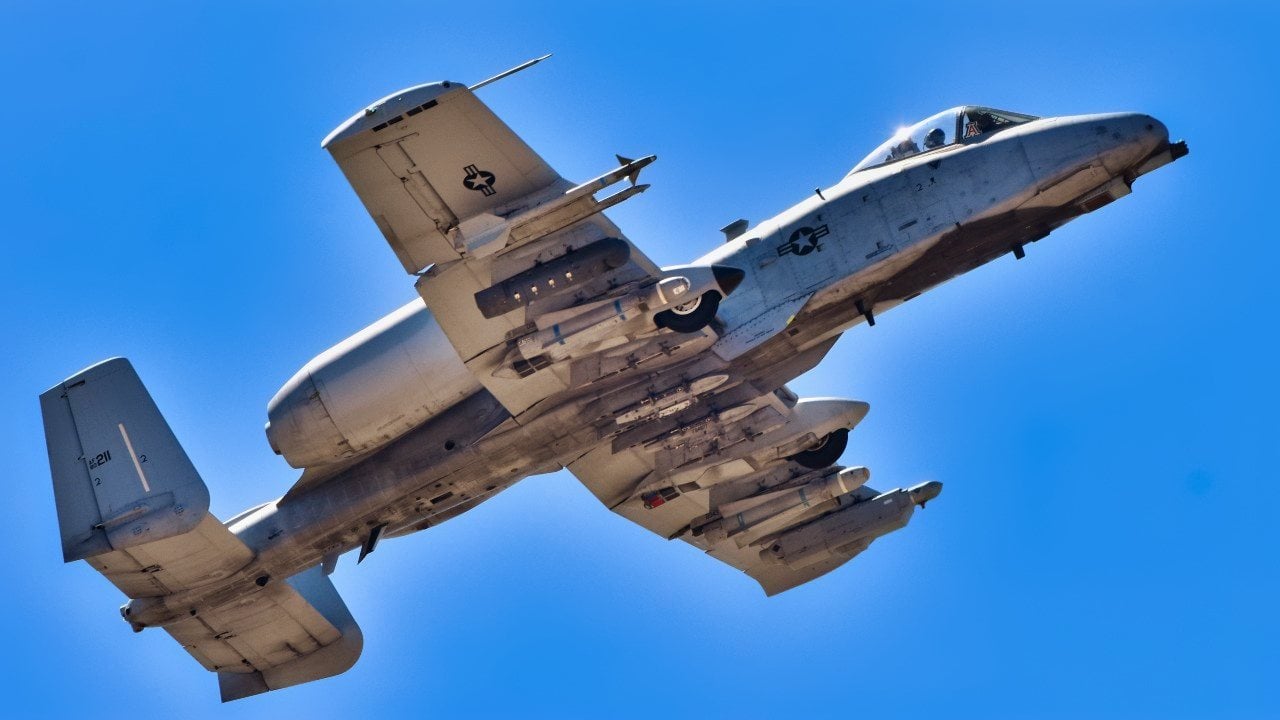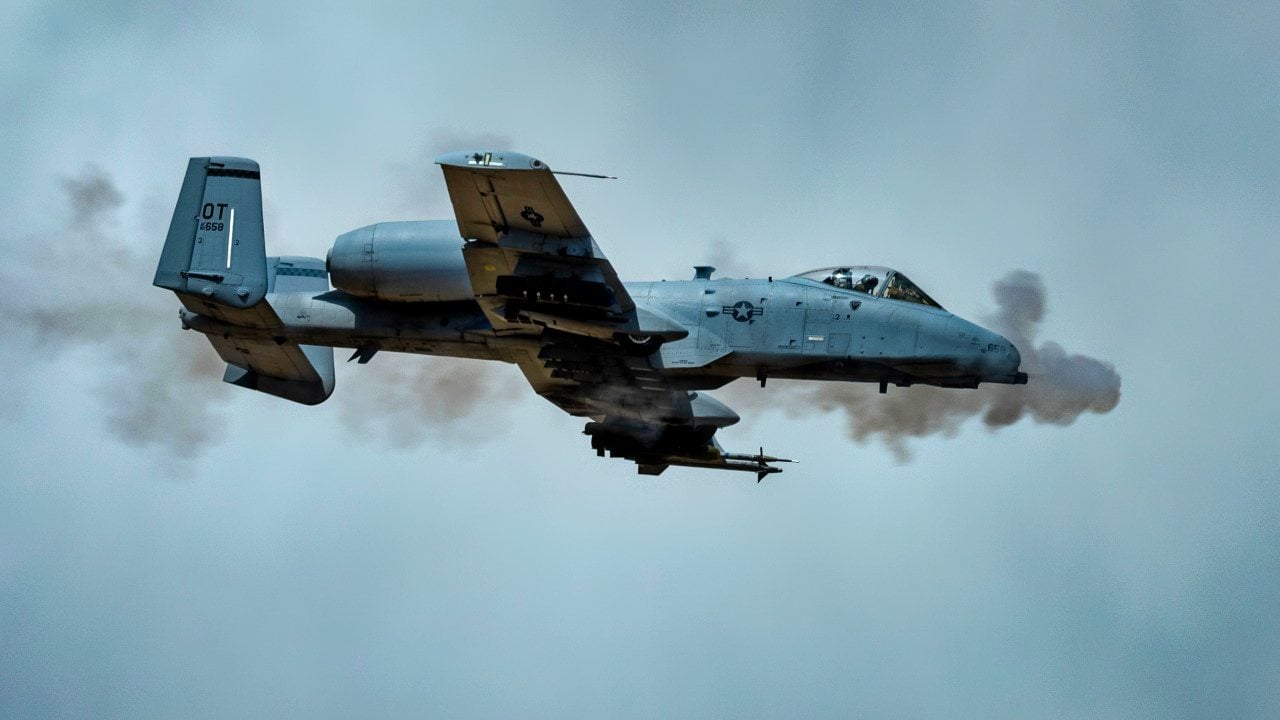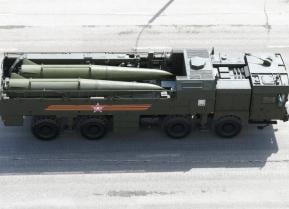A-10 Warthog Flying from Aircraft Carriers in 2 Words
The A-10 Warthog, renowned for its resilience and heavy ground-attack capabilities, is now being phased out by the U.S. Air Force, with discussions of sending remaining airframes to Ukraine. Armed with a powerful GAU-8/A Avenger Gatling gun, the A-10 was built for close air support, featuring titanium armor that shields pilots against armor-piercing rounds.
Won't Happen: The A-10 Warthog, renowned for its resilience and heavy ground-attack capabilities, is now being phased out by the U.S. Air Force, with discussions of sending remaining airframes to Ukraine. Armed with a powerful GAU-8/A Avenger Gatling gun, the A-10 was built for close air support, featuring titanium armor that shields pilots against armor-piercing rounds.

-While the Warthog’s robust firepower makes it an effective ground support asset, it wasn't designed for aircraft carrier operations.
-Significant structural modifications, including the addition of a tailhook and adaptations for carrier landings, would be required to make it suitable for carrier-based missions.
Could the A-10 Warthog Adapt to Life on Aircraft Carriers?
Months back, the Air Force dispatched a squadron of A-10 Warthogs to escort an American nuclear ballistic missile submarine near the Strait of Juan de Fuca.
The legendary A-10 has been instrumental to the service’s aerial tactics for years, but the platform is now headed towards retirement as the Air Force turns to more modern platforms. Some U.S. lawmakers have suggested that Ukraine could be a recipient of the fleet’s remaining A-10 airframes. But the future of this famous platform remains up in the air.
Could A-10 Warthogs be useful aboard aircraft carriers?
Introducing the A-10 Warthog
The U.S. became more focused on developing tactical aircraft designed to deliver nuclear weapons after the Second World War. As the Cold War got underway, the Air Force gave low priority to new ground-attack platforms.
While the McDonnell Douglas F-101 Voodoo and the Republic F-105 Thunderchief came about during this era, a more sophisticated ground-attack airframe was not conceptualized, leaving the aging Douglas A-1 Skyraider as the service’s primary attack airframe when the Vietnam War broke out. Although this platform was capable for its era, its key shortcomings led to the destruction of 266 Skyraiders during the conflict.

The A-10 was designed to solve the U.S. military’s ground-attack issues. Fairchild Republic designed the twin-turbofan, subsonic platform in the early 1970s. It immediately earned the nickname “titanium bathtub” from the titanium-reinforced armor all around its cockpit. Thanks to this added protection, the crew can survive direct hits from high-explosive projectiles and armor-piercing rounds at very close ranges.
A-10 Warthog: Specs and Capabilities
Perhaps the Warthog’s most critical capability is its hefty armament load. The hydraulically driven GAU-8/A Avenger Gatling gun positioned under the nose of the aircraft can fire at a rate of 3,900 rounds per minute.
As explained by Military.com, “The Avenger fires a mix of 30 mm electrically primed PGU-13/B High Explosive Incendiary (HEI) rounds and PGU-14/B Armor Piercing Incendiary (API) rounds. While the HEI rounds provide the Avenger the ability to destroy light skinned vehicles, the weapon’s real punch is delivered by the API rounds, each of which incorporates over half a pound of super-dense Depleted Uranium.”
As detailed by Airforce Technology, the A-10 can deliver weapons including “the LDGP Mk82 226kg, 900kg Mk-84 series low/high drag bombs, 226kg general-purpose bombs, BLU-1 and BLU-27/B Rockeye II cluster bombs, cluster bomb unit CBU-52/71, combined effects munitions, and mine dispensing munitions.”
Despite the A-10’s noteworthy capabilities, the platform was never built for carrier landings. Due to the narrowness of carrier runways and the A-10’s lack of a tailhook, among other considerations, it would take a significant overhaul to create a Warthog variant capable of this feat.
About the Author: Maya Carlin
Maya Carlin, National Security Writer with The National Interest, is an analyst with the Center for Security Policy and a former Anna Sobol Levy Fellow at IDC Herzliya in Israel. She has by-lines in many publications, including The National Interest, Jerusalem Post, and Times of Israel. You can follow her on Twitter: @MayaCarlin.
All images are Creative Commons.


